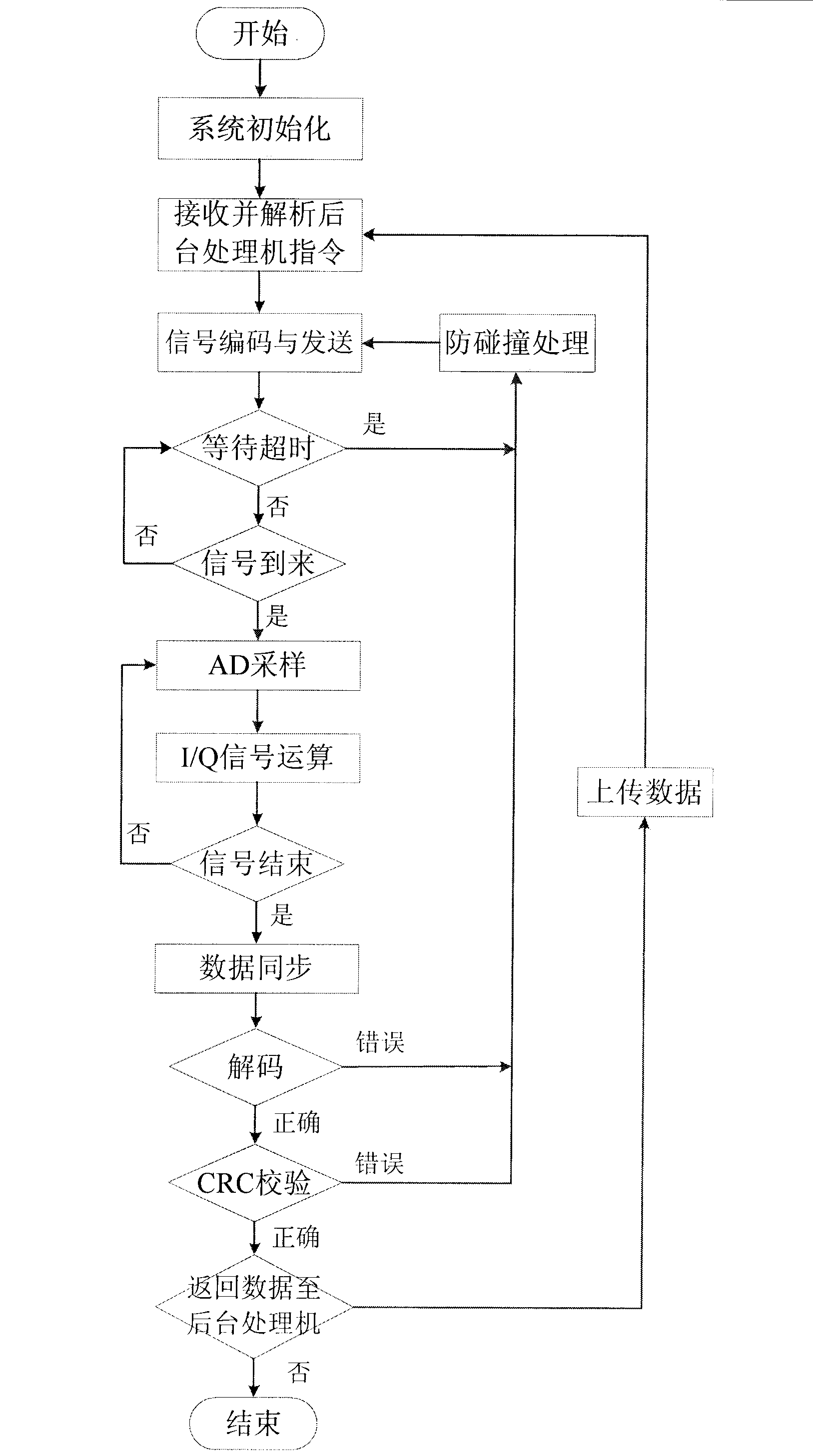Radio frequency identification system based on open type software radio platform
A radio frequency identification system and software radio technology, applied in the field of radio frequency identification technology, can solve the problem that radio frequency identification readers cannot process the underlying information, etc., and achieve the effect of improving accuracy, reading speed, and strong configurability
- Summary
- Abstract
- Description
- Claims
- Application Information
AI Technical Summary
Problems solved by technology
Method used
Image
Examples
Embodiment 1
[0016] Example 1, such as figure 1 As shown, it is a functional block diagram of a specific embodiment of the present invention, which is composed of an open physical layer processing module 1 , a background processor 2 and an open hardware interface 3 .
[0017] The open physical layer processing module 1 includes a baseband processing module 101 , an AD / DA module 102 , multiple sets of radio frequency transceiver modules 103 and a clock module 104 .
[0018] The baseband processing module 101 is a high-performance FPGA, which extracts the required narrowband signal from the input intermediate frequency digital signal, and reduces the data rate so that the data can be transmitted to the background processor through an open hardware interface. In real-time signal processing, the underlying data processing volume is relatively large, and the processing speed is relatively high. At the same time, the signal bandwidth after intermediate frequency processing reaches tens of MHz. T...
Embodiment 2
[0024] Example 2, such as figure 2 Shown is the program flow chart of the present invention. The background processor 2 sends configuration information to the baseband processing module 101 according to user instructions, and transmits parameters such as channel bandwidth, Training, pulse width (PW), and modulation depth to each module through the open hardware interface 3 . The baseband processing module 101 then encodes the signal, sends the data stream to the AD / DA module 102, turns it into an I / Q complex signal, and sends it to the radio frequency transceiver module 103 to complete the conversion from the intermediate frequency signal to the radio frequency signal, and transmit it into space through the antenna.
[0025] On the reverse path, the RFID tag within the radiation range of the antenna senses the transmitted continuous wave (CW), returns the tag information to the reader through backscatter coupling, and sends it to the reader through two down-conversion and DA ...
Embodiment 3
[0026] Example 3, such as image 3 Shown is the label state transition diagram of the present invention. During the working process of the tag, there are four states of "power down", "ready", "recognition" and "data interaction". The tag enters the working range of the reader and enters the "ready" state from the off-site "power down" state. The reader selects the command to make all or part of the tags in the "ready" state enter the "recognition" state. When more than one tag enters the "recognition" state, it is necessary to achieve effective identification of tags through collision arbitration.
PUM
 Login to View More
Login to View More Abstract
Description
Claims
Application Information
 Login to View More
Login to View More - R&D
- Intellectual Property
- Life Sciences
- Materials
- Tech Scout
- Unparalleled Data Quality
- Higher Quality Content
- 60% Fewer Hallucinations
Browse by: Latest US Patents, China's latest patents, Technical Efficacy Thesaurus, Application Domain, Technology Topic, Popular Technical Reports.
© 2025 PatSnap. All rights reserved.Legal|Privacy policy|Modern Slavery Act Transparency Statement|Sitemap|About US| Contact US: help@patsnap.com



